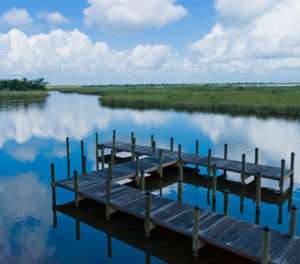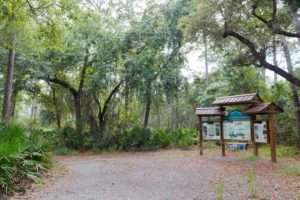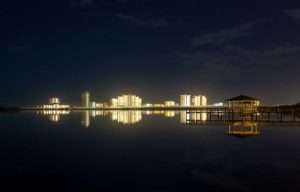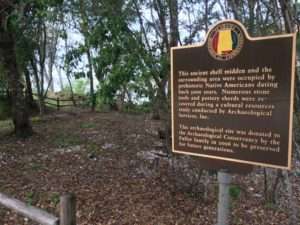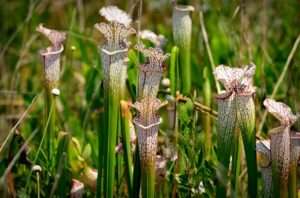The Bottle Creek site is the second largest mound site in Alabama and it represents the remnants of a large Mississippian Stage civic ceremonial complex that dominated the Mobile-Tensaw Delta from AD 1250 to 1500. Located in the heart of the Delta, Bottle Creek included eighteen mounds, canals, and residential areas that covered much of the northern end of Mound Island. The people who built the Bottle Creek mounds left behind artifacts which show a clear connection to the massive mound complex of Moundville to the north and the people of the Lower Mississippi Valley to the west. The Mississippian culture is believed to have originated in the Mississippi Valley near the end of the first millennium AD (circa AD 850) and continued as the dominant culture of the Southeast at the time of European exploration and settlement (1511-1700). Based on origin traditions and archaeological evidence, it is believed that the Mississippians moved east and established major communities in the area of what became Alabama between AD 1100 and 1250. Bottle Creek was one of the largest communities built during this time.
Why would people want to establish a city in the middle of a massive swamp? The Mobile Tensaw Delta is fed by most of the major rivers in Alabama as well as some that extend into what is today Mississippi and Georgia. Travel throughout the region was primarily conducted in two ways, by foot or by canoe. As no large pack animals or wheeled vehicles were used by the indigenous people of the region, canoe travel would have provided the easiest means to move large amounts of goods and materials through the low lying swampy Gulf Coast region where foot travel was slow and dangerous.
The people who occupied Bottle Creek were connected to other people throughout the region, trading in goods, materials, and ideas that helped build a thriving culture. They brought fish and shellfish from the coast to the south, stones for making tools, ornaments, and ceremonial items from the lands to the north, and pottery styles from across the Gulf region and beyond to Bottle Creek.
This site is very important to numerous Southeastern indigenous tribes who assert an ancestral connection with those who built and occupied Alabama’s ancient mounds. The earthwork landscapes and the objects and information recovered from them reveal a rich cultural tradition that still thrives today among these tribes. Our indigenous mound sites represent a heritage for all Alabamians to cherish, and it is important that we protect and preserve them for future generations.

